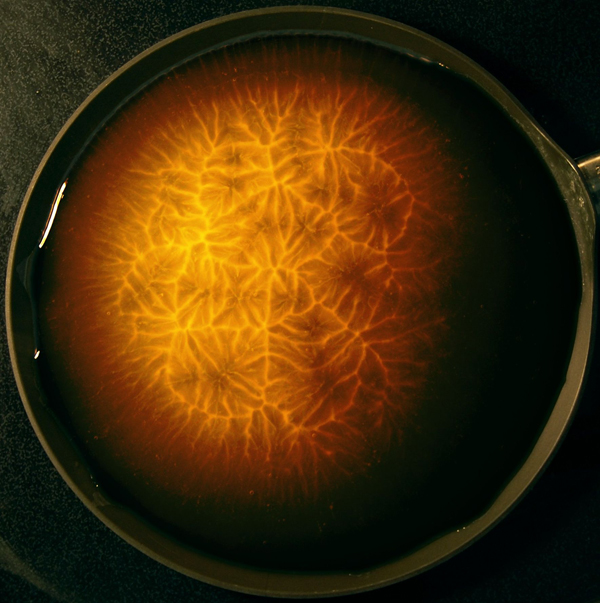A Frying Pan Filled With a Thin Layer of Egg Whites
Peter Vorobieff (kalmoth@unm.edu)
Mechanical Engineering, The University of New Mexico
Vakhtang Putkaradze (putkarad@gmail.com)
Mathematics, Colorado State University
View of a frying pan filled with a thin layer of egg whites. Thermal convection in the fluid competes with coagulation of the egg albumen to create a fingering pattern propagating into the convection cells.

This image shows a pattern forming a few minutes after several egg whites are poured on a warm frying pan. Note that egg white is mostly water (90%). The remaining 10% or so are a mixture of different proteins, ovalbumin being the most prominent. The layer of egg white is being heated at the bottom by contact with the frying pan, and cooled at the top by contact with the cooler air. The heated egg white near the bottom of the layer is more buoyant, so it rises to the top, where it cools down and sinks back to the bottom, establishing a thermal convection pattern usually comprised of rolls or cells. On the boundaries of the cells, the fluid moves slower, which causes it to heat up faster. And, as the egg white heats up, the proteins in it begin to coagulate, firming and changing color. Then a pattern of "fingers" of coagulated protein propagates from the cell boundaries into the cell interiors. This is the moment shown in the image. Shortly thereafter, all the protein coagulates, and the omelet is ready. No egg yolks were used, so it's zero cholesterol!
This is from unfunded research.
These images are not published, though they are a part of a paper in preparation.
